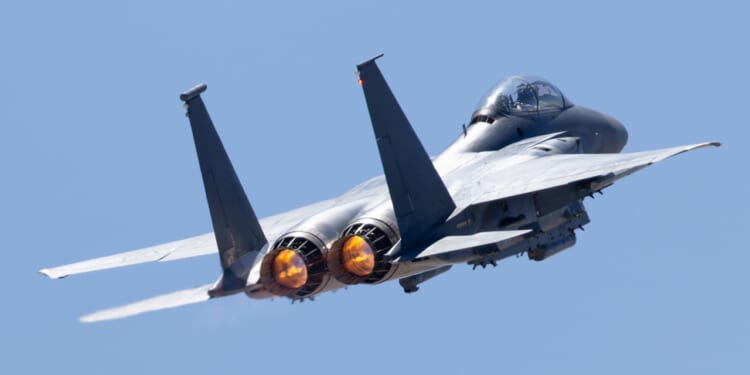Fighter plane tails were dramatically reshaped after the advent of “fly-by-wire” controls, rendering the aircraft’s stability irrelevant.
What’s in a tail? The tail of a fighter aircraft, specifically the vertical stabilizer, has quietly evolved over the generations, in a way tracing the evolution of aerial warfare itself. Once a simple fin designed to keep an airplane pointed straight, the tail has since evolved into a sophisticated, multi-axis control surface, shaped as much by stealth and software by as aerodynamics.
Why Do Planes Need a Tail, Anyway?
For the first half-century of flight—covering the first days of flight to piston-driven propeller aircraft to the early jet era—an aircraft’s tail was built for stability. Fighters like the P-51 Mustang and Supermarine Spitfire relied on a tall, broad fin of a tail to counter the torque of their propellers and the asymmetrical wash of air across the fuselage. Without a strong tail, the early fighters would have yawed (turned left or right) uncontrollably. The early tails were built to be forgiving on the pilot, and the bigger the tail, the more stable the aircraft.
When early jet fighters emerged, like the F-86 Sabre and the MiG-15, their tails were modified to account for the higher speeds—requiring them to be rearward, thin, and reinforced. Compressibility at the edge of the sound barrier demanded stronger structure and sleeker geometry, but the principle remained unchanged: the tail was still all about keeping the nose flying straight.
As Planes Got Faster, Tails Got Weirder
Supersonic flight changed the tail’s requirements. At Mach 2, shockwaves distort airflow, robbing conventional tails of authority. To compensate, aircraft like the F-104 Straighter and the F-4 Phantom II used towering vertical fins, huge slabs that could slice through the thin air at altitude, maintaining rudder authority.
But designers soon learned that a single fin that tall created storage problems on carriers as well as instability at high angles of attack. The solution: twin-tails, as found on the F-14 Tomcat and most modern fighter jets. The single large central tail was divided into two smaller, outward-canted fins that shared the aerodynamic load between them, maintaining control even when one was blanked by turbulent airflow. Twin tails came to be associated with high performance; they were more maneuverable, more stable, and flexible enough for naval operations.
But with the advent of digital fly-by-wire technology in the 1970s, the concept of aerodynamic stability itself came into question. With computers making thousands of micro-corrections per second, fighters no longer needed to be stable, and successive generations of aircraft traded steadiness for agility—rendering the traditional role of the tail fin as yaw stabilizer irrelevant. Enter the F-16 Fighting Falcon, a supersonic fourth-generation jet with a sharply swept and modestly sized single tail—more of a digital input than a pure stabilizer.
While the F-16 used one tail, the twin-tail configuration became standard for high-angle maneuvering. Accordingly, there F-15 Eagle, F/A-18 Hornet, and Su-27, amongst others, all adopted paired vertical surfaces for redundancy and control in post-stall flight. And as stealth became more central to aircraft design, designers found that the spacing of the fins could improve radar cross-sections by dispersing radar reflections.
Stealth Aircraft Have Changed the Tail Even Further
As stealth became central to fighter design, modern concepts like the F-22 Raptor and F-35 Lightning II took lessons learned on earlier tail designs even further. Configured with twin fins that can’t sharply outward by 25 or 30 degrees, the fifth-generation stealth fighter features tails that deflect radar energy away. The new tails are also all-moving functioning as rudders, elevators, or airbrakes depending on the flight regime.
In essence, modern fighter tails are a far cry from the rudimentary fins that were installed merely to keep the aircraft’s nose flying straight. Today’s tails are an aerodynamic tool that enhance agility and reduce observability.
About the Author: Harrison Kass
Harrison Kass is a senior defense and national security writer at The National Interest. Kass is an attorney and former political candidate who joined the US Air Force as a pilot trainee before being medically discharged. He focuses on military strategy, aerospace, and global security affairs. He holds a JD from the University of Oregon and a master’s in Global Journalism and International Relations from NYU.
Image: Shutterstock / ranchorunner.


















